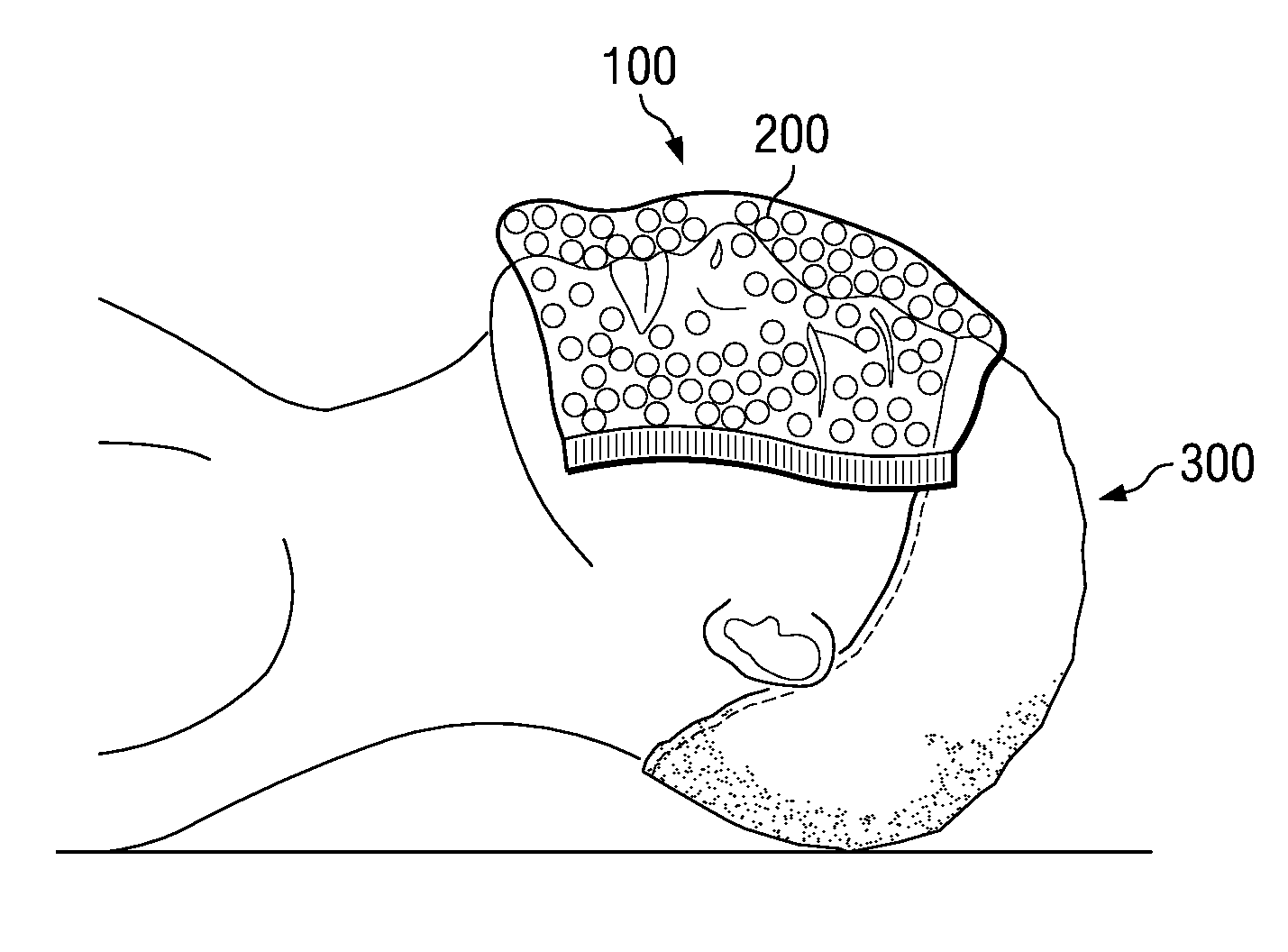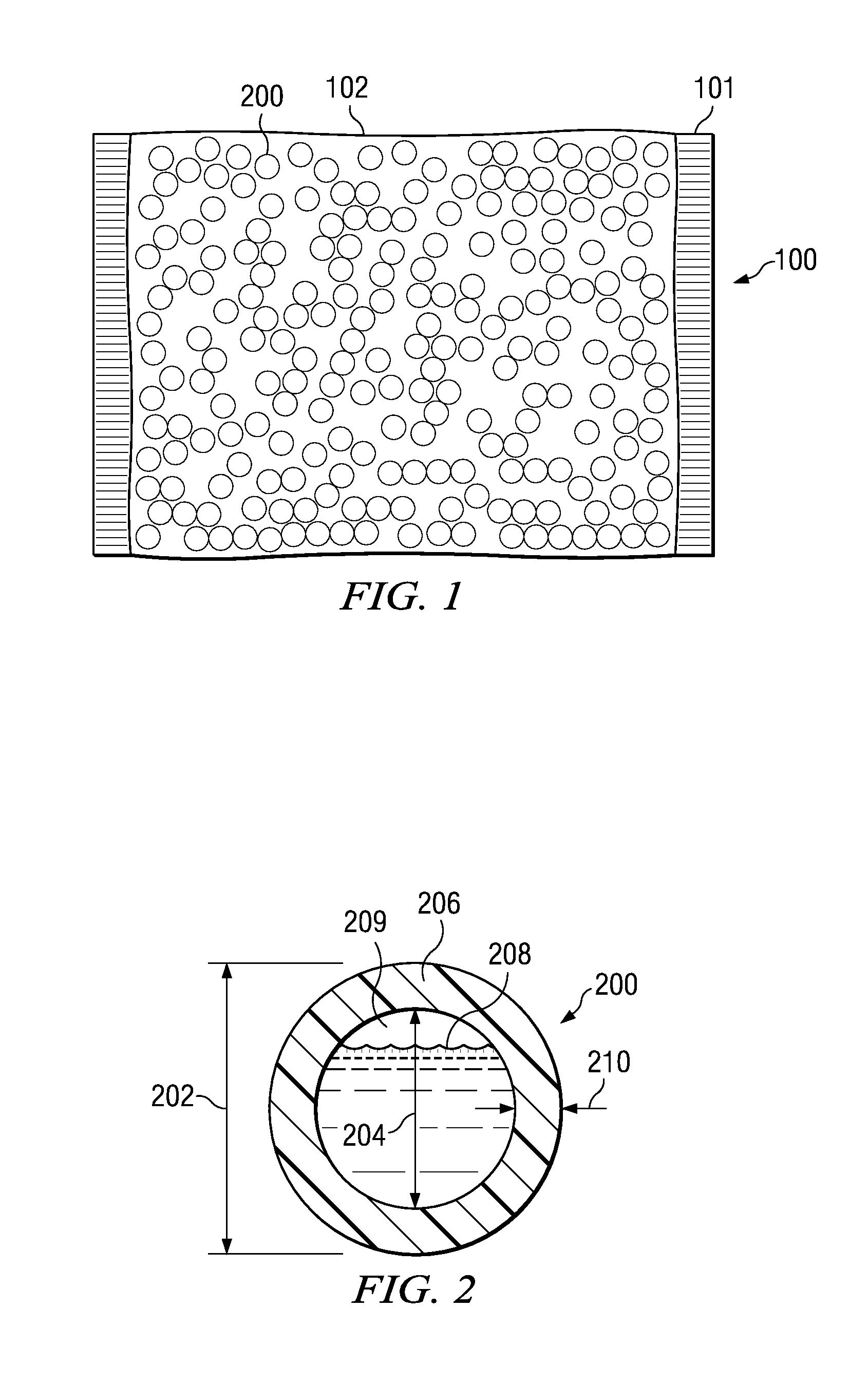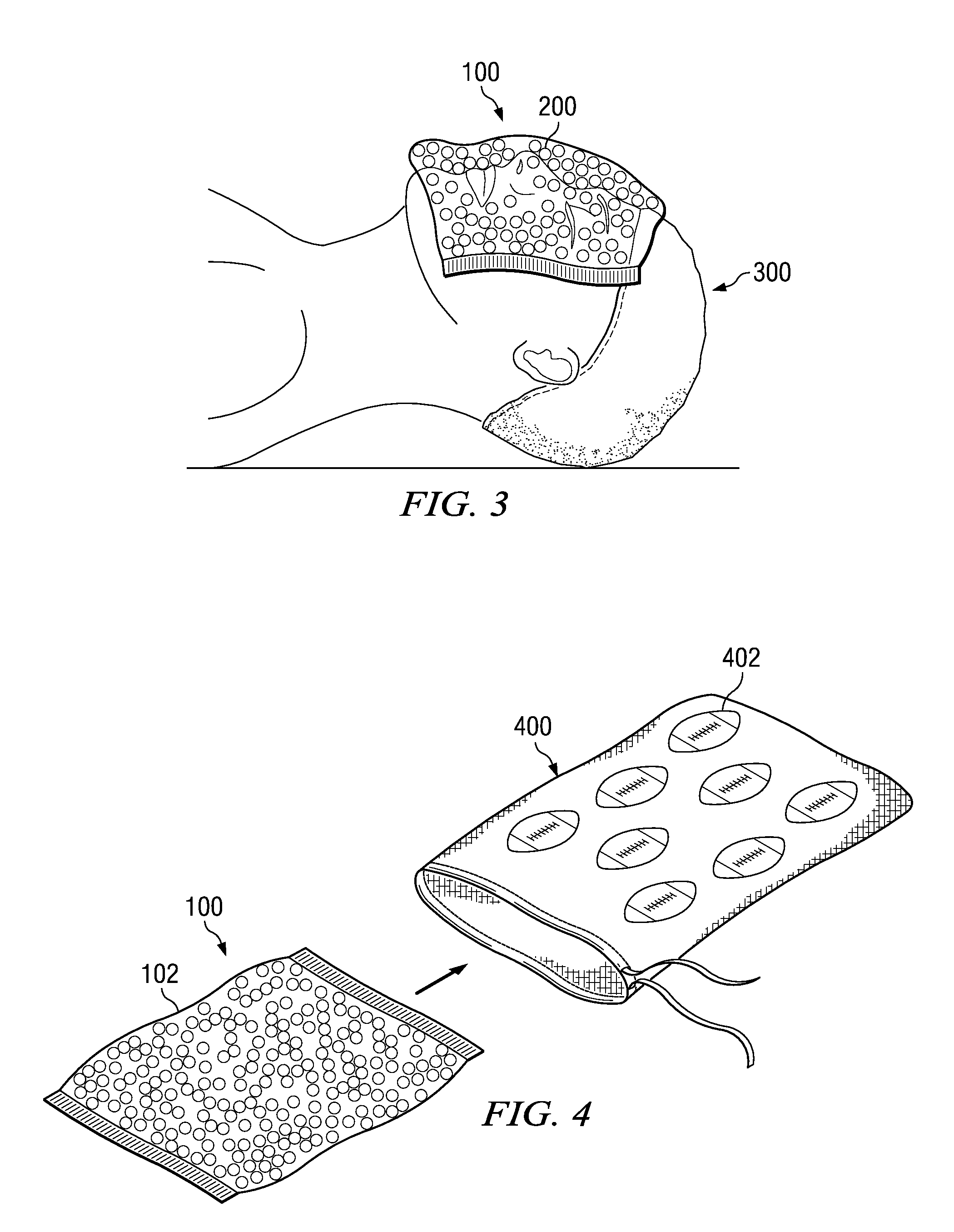Cold compress for therapeutic cooling
a cold compress and therapeutic cooling technology, applied in the field of bags for use as cooling medium, can solve the problems of limited cooling surface area of ice packs, heavy ice packs, and great drawbacks of ice packs, and achieve high heat transfer, flexibility, and contour ability, and high surface area and flexibility.
- Summary
- Abstract
- Description
- Claims
- Application Information
AI Technical Summary
Benefits of technology
Problems solved by technology
Method used
Image
Examples
Embodiment Construction
[0033]Referring now to the provided drawings, similar reference numerals represent the equivalent component throughout the several views of the drawings. FIG. 1 illustrates a top cut-away view of the sealed flexible bag in accordance with one embodiment of the present invention. FIG. 2 illustrates a cross-sectional side view of a sphere in accordance with one embodiment of the present invention. FIG. 3 illustrates a side view of a sealed flexible bag, depicted in FIG. 1, contouring to a patient's face.
[0034]Referring to FIG. 1, a cold compress 100 comprises a plurality of free-flowing spheres 200 inside the sealed bag 102. As used herein, free-flowing is used to describe an independent object that is not connected or attached to another object and that is free to flow and respond independently to pressure and gravity. Although the cold compress 100 is depicted as having two transverse seals 101 it can be made by methods known in the art such as with vertical form fill and seal machi...
PUM
 Login to View More
Login to View More Abstract
Description
Claims
Application Information
 Login to View More
Login to View More - R&D
- Intellectual Property
- Life Sciences
- Materials
- Tech Scout
- Unparalleled Data Quality
- Higher Quality Content
- 60% Fewer Hallucinations
Browse by: Latest US Patents, China's latest patents, Technical Efficacy Thesaurus, Application Domain, Technology Topic, Popular Technical Reports.
© 2025 PatSnap. All rights reserved.Legal|Privacy policy|Modern Slavery Act Transparency Statement|Sitemap|About US| Contact US: help@patsnap.com



